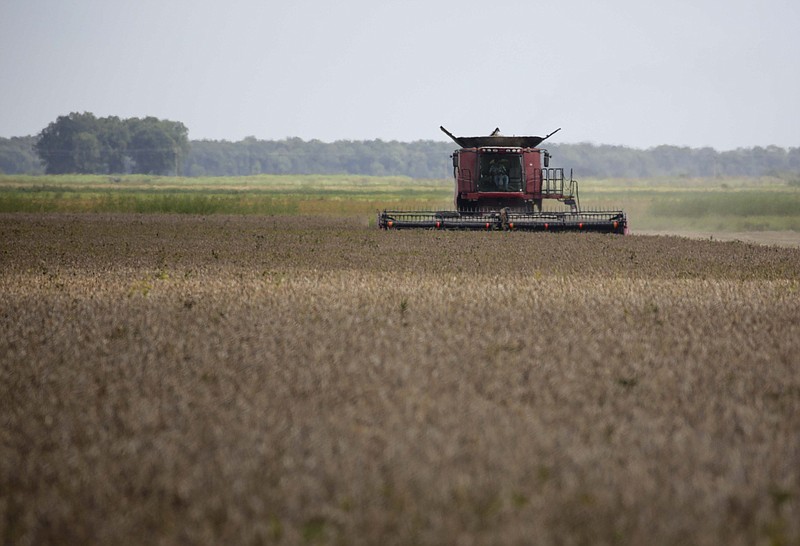Recent rainfall across the South is slightly improving topsoil moisture levels but Arkansas is still relatively dry, and that's not a bad thing during harvest season.
It's time for Arkansas farmers to start harvesting certain crops and they need dry conditions or it could delay the process, said University of Arkansas System Division of Agriculture Extension Soil and Water Conservation scientist Mike Daniels.
"This is a tough time of year, in terms of precipitation," Daniels said.
"We are actively cutting corn, soybeans, rice, and you want dry conditions for harvesting. You don't want to rut your fields up. Some later maturing soybeans and possibly some cotton is still trying to get to physiological maturity, or to a point where we don't have to irrigate them any longer. Irrigation on cotton, if it's not already stopped, should be stopping pretty soon if we don't get rain and the only thing left would be late season soybeans. There might still be some irrigation going on there."
"Most farmers are hoping they don't get any more rain for the next, I'd say, six weeks so they can harvest," he said.
Recent heavy rainfall has improved topsoil moisture across five Southern states. Louisiana reported a 53% topsoil moisture surplus, a decrease from the week before after heavy rainfall in the Central Gulf Coast region, according to the USDA's Crop Progress Report for the week ending Sep. 4.
Alabama, Florida, Georgia and Mississippi each reported a double-digit surplus of topsoil moisture above 10%.
Arkansas's landscape is starting to dry out but soil moisture varies across the state.
Arkansas topsoil moisture levels were 37% very-short-to-short, 60% adequate and 3% surplus, according to the most recent Crop Progress Report.
Topsoil moisture levels the week before in the state were 34% very-short-to-short, 60% adequate and 6% surplus.
"I was talking to a farmer yesterday. He said they're all tired of sitting in the shop," Daniels said.
"Well, they got so much rain, the fields are wet and they can't get in and harvest and it makes them nervous. They're ready to harvest, they're ready to get it over with. That's an exciting time of year for them, so we're at that point where now farmers want it to be dry for harvest."
"Most of them are hoping that if it's a normal year, we'll get enough rain in late October and November to have enough moisture left to get those crops up."
Surplus topsoil moisture isn't necessarily a good thing for crops, and farmers don't really need a lot of rainfall heading into the fall, Daniels said, especially during wheat planting, as too much moisture could cause other issues with the crops.
In Arkansas, wheat and cover crops are typically planted in the fall and farmers don't typically irrigate cover crops, as it is an extra expense, Daniels said.
Arkansas farmers are still somewhat affected by the drought in summer, particularly as Delta row crops use a lot of water.
Drought hit Arkansas in June and continued for several weeks, affecting crops, livestock production and pastures before rainfall finally began to fall sporadically across the state last month.
"We've gotten enough rain in the last month. August was a really good month to us, especially the last three weeks, for rain, that it did temporarily reduce our drought issues at the surface," Daniels said.
